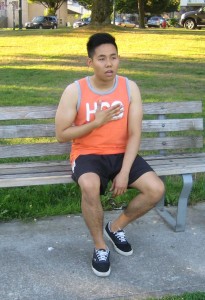Pulmonary embolism is a blockage, or a blood clot of a major artery found in the lung. The clots are usually small and not very dangerous but they can cause damage to the lungs. The clot can become large and stops the flow of blood to the lung and can be dangerous.
https://www.youtube.com/watch?v=Lp65yGitCNo
A lung blood clot can begin in any areas of the body. It is usually a clot in the deep veins in the legs called deep venous thrombosis or DVT. The formation of deep venous thrombosis can break apart into small pieces and spreads to the circulation in the arteries in the lungs and cause blockage of blood flow.
Symptoms of pulmonary embolism
- Shortness of breath and wheezing and other symptoms of problems with breathing
- Coughing up blood
- Chest pain
- A large blood clot in the lung causes severe symptoms such as rapid breathing, severe shortness of breath and fast heart rate. It also causes symptoms such confusion, dizziness and becomes unconscious within minutes.
- Fast heart rate and high blood pressure
- Fever
Shortness of breath and wheezing and other symptoms of problems with breathing. - Abnormal sounds coming from the lungs and heart
- If a clot has formed pain and warmth can be felt on the affected leg, and also tenderness and redness of the area. There are changes in color or appearance near the affected area. Walking and movement becomes difficult.
Risk factors
- Older people especially with ages between 60-75
- Sedentary lifestyle or too little exercise
- Being overweight or obese
- Having a history of previous heart attack, stroke and blood clots
- Healing from surgery and recovering from illness and dealing with stress or trauma
- Menopause and hormonal changes
- Pregnancy
- Certain inherited traits
Treatment
- Take the prescribed blood thinners or anticoagulants medication to stop clots in the lungs from becoming large and prevent formation of a new clot.
- Use the prescribed “clot-busting” medication to dissolve a large lung clot or performing a procedure to remove the clot.
- Perform exercises regularly to make immune system of the body strong and for fast healing of any condition including pulmonary embolism due to lack of mobility or prolonged sitting. Another alternative is stretching the legs toward the head and relax. Repeat this exercise several times. Walking is also good for the condition. Perform aerobic exercises such as running or cycling.
- Stop smoking to prevent making the condition worse especially when taking medications containing estrogen and birth control pills.
- Wear compression stocking to lessen the development of deep vein thrombosis and the risk of pulmonary embolism. Compression stocking are hosiery designed in preventing the development of venous disorder such as thrombosis. They are elastic garments around the legs and compress the limb.
- Consume fish oil to thin out formation of clots in the artery.
- Maintain a healthy weight to minimize pressure place on the vital organs, heart, blood vessels and the lower extremities. Minimize consumption of inflammatory processed foods.
- Take plenty of sleep and avoid being stressed.
- Take the prescribed vitamin E supplement to thin out blood clots.
More Information
The details posted on this page on pulmonary embolism is for learning purposes only. To learn to recognize the indications and how it is treated, enroll in a first aid course with one of our training providers.
FACT CHECK
https://en.wikipedia.org/wiki/Pulmonary_embolism
https://medlineplus.gov/pulmonaryembolism.html
https://www.mayoclinic.org/diseases-conditions/pulmonary-embolism/symptoms-causes/syc-20354647


